April 19, 2025 | 00:28 GMT +7
April 19, 2025 | 00:28 GMT +7
Hotline: 0913.378.918
April 19, 2025 | 00:28 GMT +7
Hotline: 0913.378.918
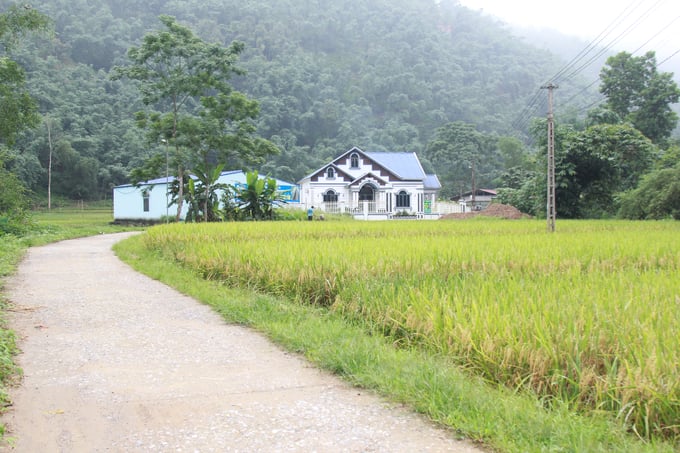
From a once impoverished and desolate place, Dong Ruong village (Kien Thanh commune, Tran Yen district, Yen Bai province) has risen to become a prosperous and livable rural area. Photo: Thanh Tien.
During the winter of 2009, I first visited Dong Ruong village as part of a volunteer trip to distribute clothes and warm blankets to the students at a local kindergarten here.
My first memorable impression was the road from the commune centre to Dong Ruong village, which was over 7km of muddy dirt road. Our small truck carrying essential supplies for the children struggled to climb a few hills and often got stuck in the middle of the road. The volunteers, some carrying blankets and others hauling bags of clothes, walked about 5 km on this isolated road, crossing deep muddy trenches, and winding rocky slopes, and wading through two streams before reaching the centre of Dong Ruong village.
The village centre is nestled in a relatively flat valley surrounded by rugged mountains. Another "impression" upon arrival was the poverty in this H'mong ethnic village, with old, worn-out houses scattered around the original cornfields after harvest. Black pigs searched for food right by the roadside...
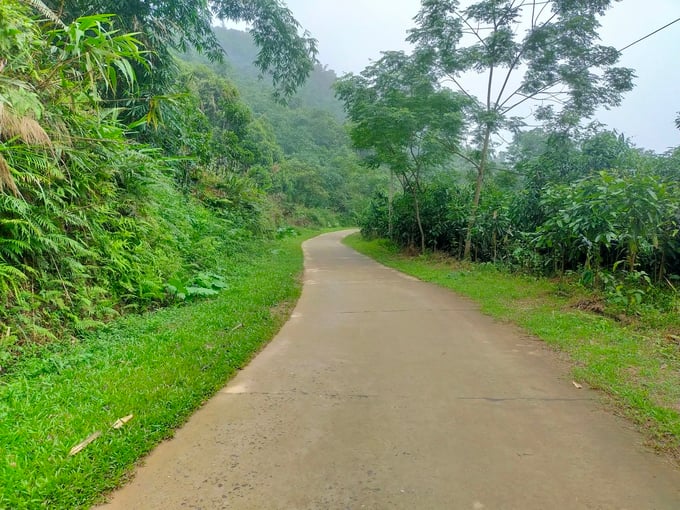
The muddy dirt road leading to the centre of Dong Ruong village in the past has now been replaced by a spacious and tidy concrete road. Photo: Thanh Tien.
Returning to Dong Ruong village after 15 years on a summer day, inside the most beautiful and tidy house in the village, Mr Giang A Sau, the village head, recounted the history of this land. In 1987, several H'mong households from Suoi Giang commune, Van Chan district, migrated to Mo Vang commune, Van Yen district, and then settled in Dong Ruong. In the early days, there were only 3 households: Mr Giang A Nha, Giang A Vu, and Giang A Chu, totalling 19 people who came here to live. The households focused on clearing land for rice cultivation and clearing a hillside to plant cassava for food. Their main sources of food were wild bamboo shoots and forest animals hunted for meat.
Gradually, more families from Mo Vang (Van Yen district) continued to move here, and the population grew. By 1994, this area was officially established and named Dong Ruong village, consisting of 27 households, including 3 Tay ethnic households, with the rest being H'mong people. The name "Dong Ruong" was chosen because the area is flat and suitable for rice cultivation with abundant water.
At that time, this place was still pristine, a valley covered with dense grass, surrounded by high mountains, and abundant wildlife, including tigers and leopards that preyed on the villagers' pigs and chickens.

The sturdy bridge over the stream leading to the centre of Dong Ruong village has been constructed to ensure safety for residents during the rainy season. Photo: Thanh Tien.
In the early days, the H'mong people here relied heavily on nature, making life extremely difficult. Many households suffered from food shortages for several months each year, resorting to foraging for wild bamboo shoots, arrowroot, and wild yams. Just a decade ago, nearly 70% of the households in the village were impoverished... From the centre of Kien Thanh commune to Dong Ruong village, one had to struggle along a rugged, nearly ten-kilometre single-track road that became slippery and muddy after every rain. The residents lived in isolation without electricity, medical facilities, or cell phone signals.
Returning to Dong Ruong village, I am truly amazed by the transformation of this once extremely impoverished place. The road from the commune to the village centre has been solidified with flat concrete, and sturdy concrete bridges connect both sides of the stream for convenient travel. High-rise, modern houses are clustered together, creating a small town-like area amidst the mountains and forests.
Currently, the village has 50 households with nearly 270 residents. At this time, the villagers are busy preparing land and planting rice for the season. Manual labour has been replaced with mechanized farming; almost every household owns a tractor to plough the fields faster and more efficiently.
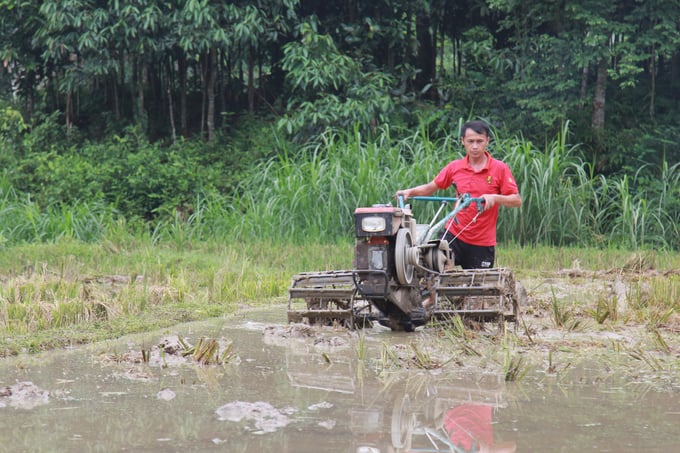
In Dong Ruong village, the H'mong people affectionately refer to the ploughing machines as "iron buffaloes," which help them achieve more efficient agricultural production. Photo: Thanh Tien.
Mr Giang A Chu from Dong Ruong village candidly shares that in the past, the villagers relied on manual labour with hoes and buffalo-drawn ploughs to cultivate their fields. They could only plant one crop of rice per year, and the yields were unstable due to poor seed selection. As a result, the rice plants often remained immature and couldn't be harvested. Food shortages were a common occurrence, with many families regularly having to eat cassava as a staple food.
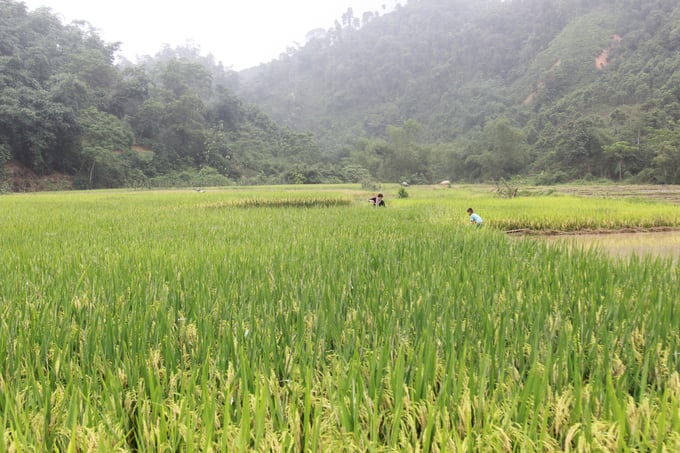
From poverty and scarcity, today the people in Dong Ruong village have shifted to cultivating rice twice a year, ensuring food security and even a surplus for livestock. Photo: Thanh Tien.
Currently busy preparing for the upcoming rice planting season, the Mong people here are also gearing up with tools like knives, baskets, sacks, and transportation vehicles for the upcoming Bat Do bamboo shoot harvest, starting in July. With abundant rainfall this year, it's expected that the bamboo shoots will be larger, increasing productivity and yield, ensuring a more fruitful harvest season compared to last year.

Bat Do bamboo and cinnamon cover the forests to help the people of Dong Ruong village have an increasingly prosperous life. Photo: Thanh Tien.
Nowadays, almost every season of the year brings stable income to the villagers of Dong Ruong. At the beginning of the year, they harvest bamboo shoots; in the middle of the year, it's time to harvest Bat Đo bamboo shoots; and at the end of the year, they gather cinnamon. The days of hardship are now far behind, as the villagers have enough food and essentials, and the entire village boasts several dozen cars.
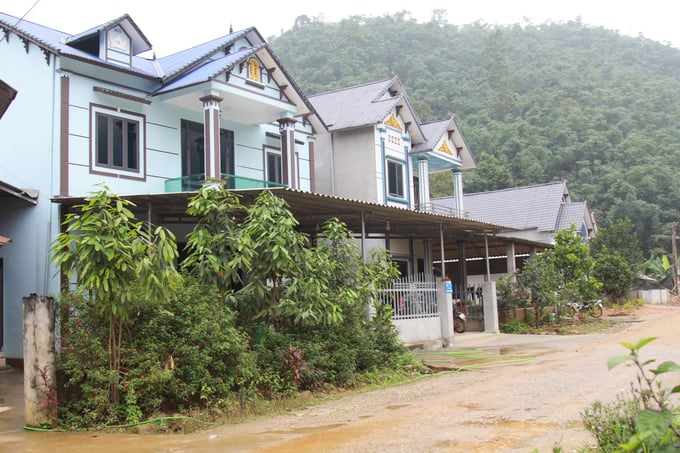
The two-story houses are closely clustered like a small street corner amid the mountains and forests. Photo: Thanh Tien.
Translated by Hoang Duy

(VAN) Green finance needs to undergo global reform to ensure capital flows to the right places, at the right time, and supports a just green transition.
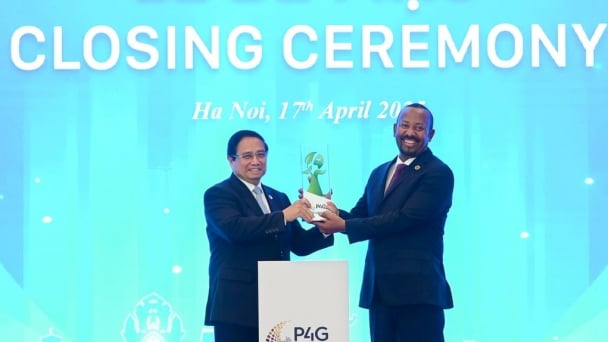
(VAN) On the afternoon of April 17, Prime Minister Pham Minh Chinh chaired the closing ceremony of the P4G Vietnam Summit 2025, with the theme 'Sustainable and People-Centered Green Transformation.'
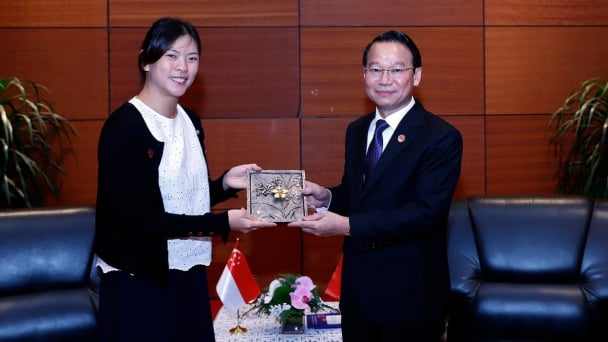
(VAN) Vietnam and Singapore are poised to sign the Paris Agreement and collaborate on implementing large-scale renewable energy projects that are mutually beneficial.
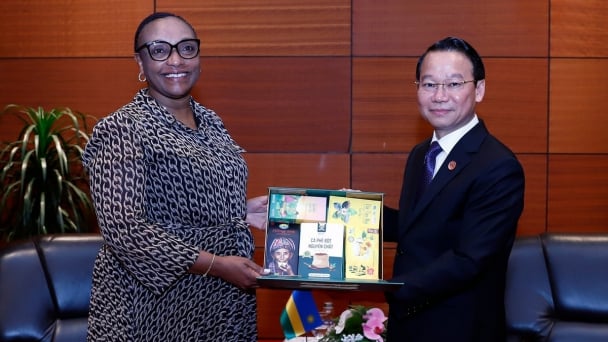
(VAN) Vietnam and Rwanda agreed to promote agricultural and environmental cooperation towards green growth and sustainable development in the new period.
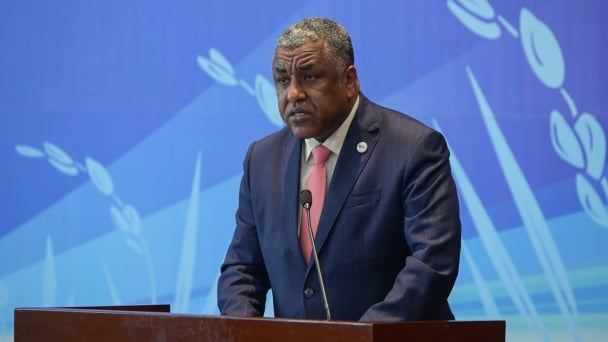
(VAN) With a comprehensive food system transformation roadmap, Ethiopia has become Africa's largest wheat producer, ensuring domestic consumption and export.

(VAN) On the morning of April 17, Deputy Minister of Agriculture and Environment Phung Duc Tien welcomed and worked with Mr. Gennady Bezdetko, Ambassador Extraordinary and Plenipotentiary of the Russian Federation to Vietnam.
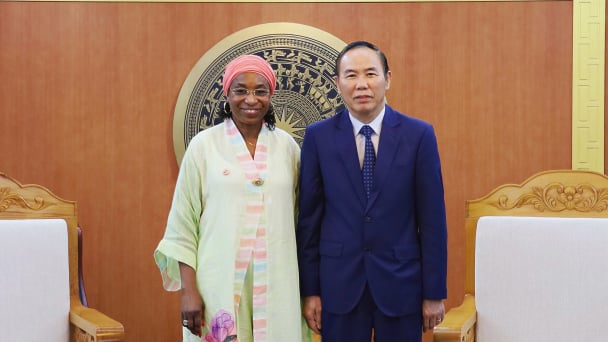
(VAN) On the afternoon of April 17, Deputy Minister of Agriculture and Environment Phung Duc Tien received with UNIDO Deputy Director-General Fatou Haidara.